Game Information:
Name: Trine 2: Complete Story
Released: June 6, 2013
Developer: Frozenbyte
Rating: 8.5/10
Hardware Specifications:
Processor: AMD Phenom II X4 955 BE 3.2 Ghz
Video Card: Diamond AMD Radeon HD 4670
Memory: 4 Gigabytes DDR3 PC10666, 1333 MHz
Hard Drive: 500 GB Western Digital Caviar Black
System Specifications:
Distribution: Arch Linux
Kernel: Linux 3.11.2
Graphics Driver: R600 Gallium3D Driver
Desktop Environment: Xfce with composting
The original Trine (2009) first became notable to me after I had discovered that its developer Frozenbyte had given full permission to redistribute certain screenshots of the game under a Creative Commons license as long as an attribution back to them was preserved. This is a sadly underused marketing technique which also provides the added benefit of allowing a company's game titles to have beautifully well illustrated articles on Wikipedia. By this point some of Frozenbyte's earlier titles in the Shadowgrounds series (2005-2007) had already arrived on Linux in the form of somewhat underwhelming third-party ports, but with the knowledge I had gained from their policy regarding screenshots, I had discovered that the game's original developers were well capable of trying new and better methods of interacting with their community. As such, I accordingly became quite confident that this situation would at some point improve upon itself.
Later that year came word that a port of Trine was expected to be released for Linux in the near future, with it finally arriving alongside updated and improved Shadowgrounds ports in the form of the Humble Frozenbyte Bundle (2011). While these releases were once again handled by an independent third-party porting house called Alternative Games, the original developer of the series, Frozenbyte, later committed to handling the Linux port of their next game Trine 2 themselves, although us Linux gamers still needed to tolerate a delay of several months before we were actually able to play the game. This trend continued with the release of the Goblin Menace expansion, which remained unavailable on our platform until the Linux release of Steam, and even longer for those of use who refuse to play any game that employs DRM, with the expansion content not being accessible to us until the release of Trine 2: Complete Story as part of Humble Indie Bundle 9 (2013). While Frozenbyte's heart is clearly in the right place, it has most definitely developed a tendency of keeping us waiting before sharing with us some of its regard.
For those unfamiliar with the franchise, the main thing that sets it apart from other similar physics platformers is that it allows players to take control of three unique heroes in order to solve a variety of puzzles and battle enemies, an idea that first originated for them with the release of Shadowgrounds: Survivor (2007). Amadeus is a somewhat cowardly and self-indulgent wizard who nevertheless means well and can use his magical powers to move and conjure objects. Pontius is a proud and noble knight of significant girth and less than average intelligence, who nevertheless is a stout fighter and a man of great physical and moral strength. Zoya, meanwhile, is a rather counter-intuitively eye catching thief who uses her grappling hook and bow to sneak through the night unheard and unseen, often for nefarious purposes. The original game chronicled the events that led to these three becoming united as one powerful force by touching the Trine, a mystical object that allows for the joining of souls, as well as conveniently bringing our characters back to life whenever the need arises, which it quite often does.
Trine 2 takes full advantage of the possibilities that having three playable characters can offer, with one being able to switch between all three in single-player mode or have each player cycle between the bunch of them while playing cooperatively. Frozenbyte did a very good job of making each of these characters feel indispensable while playing the game, with each having very specific and useful abilities that the others lack, ensuring that all three of the heroes get a significant amount of screen time throughout the course of the game. That being said, Frozenbyte also tried to ensure that no one character would ever become essential to solving any one particular game breaking puzzle, which means that it is always up to the players themselves to decide which solution works best for them, something that allows for a far greater flexibility of action than is seen in some other similar games such as Recoil Games' Rochard (2011).
This is one area where Trine 2 does build on considerably when compared to its predecessor, with the balance of strengths between the characters receiving some subtle but important tweaks that do well to help balance out the tripartite whole in several small if still very noticeable ways. Added abilities given to Zoya and Pontius help them become far more effective at navigating the game's complex worlds and make the wizard a little less of an obvious choice when it comes to puzzle solving, with the knight's enhanced power to charge across gaps and Zoya's talent for generating ice floes with her ice bow coming in particularly handy. Amadeus, meanwhile, who was almost entirely defenceless in the original game besides his ability to drop objects on foes, is now given a far greater range of offensive capabilities, from being able to pick up and daze enemies before tossing them into convenient hazards to generating specific monster cages that can imprison hostile adversaries.
Certain other game elements have also been given small but still important tweaks, often for the better. A new skills menu replaces the old inventory screen of the first game, and gives the player far greater flexibility in deciding which characters can be assigned experience points. Experience can now also be traded between characters, which is a very useful thing due to the sequel's much expanded skill tree and sometimes high skill prices. All collectable items are now merely esoteric elements, which mostly serve to help flesh out the game world and sometimes elaborate on specific plot points. They still reward players for cleverness and exploration, but they no longer provide any particular gameplay advantages or tools like they did in the first game. The energy variable that limited the amount of actions available to the player at any given time and needed to be recharged by the collection of blue energy bottles has also been dropped in the sequel, likely due to the more rounded out skill sets of the game's three main characters, as it always did seem to be there mostly as an artificial block to try and counter the puzzle solving abilities of the wizard.
But by far the most intuitive change was the implementation of a proper save system, something which Frozenbyte seemed surprisingly adverse to in their previous titles. While the original Trine did already improve upon this by the addition of a checkpoint system that served to replenish characters and resurrect them after they died, unlike in the Shadowgrounds games where such a situation forced a painful level restart, in Trine 2 one's progress is saved upon closing to the main menu, meaning that you do not actually need to finish a level before quitting or taking a break from a particularity irritating puzzle. Completed levels can still thankfully be selected from a convenient menu screen however, keeping the best feature that was gained from their previous harshness to saving. The physics and input calculations have also been made faster and more fine tuned making it easier to conjure and move objects, all of which allows the game's interface to be a lot less of a grating experience.
The puzzles have also grown to be far larger and more elaborate than in the previous game. The original Trine relied heavily on many physic puzzle staples such as seesaws, scales, gears, pendulums, and revolving platforms, as well as several traditional platforming elements. Trine 2 still has all of these while also adding many new imaginative puzzles that take advantage of the game's more natural setting, consisting mostly of forests, ruins, and other structures overran by growth. One puzzle which is heavily used, and is also quite plot important, involves guiding magic water to certain designated spots in order to grow large plants which can help the player navigate to certain previously inaccessible parts of the level, or occasionally trigger a sequence of events vital to the progression of the game. These setups do well to utilize the game's physics engine, as it often takes a detailed understanding of how the game world works in order to make the water flow exactly as you expect it to. Bouncy mushrooms and mud slides also help to make the game feel faster and far more fluid, while noxious gas clouds and carnivorous plants remind us why we must not always be so willing to embrace the raw forces of the natural world.
Two other new puzzles involve either the movement of portals, controlled by levers, and fitting pipes into the right order in order to solve the game's grave plumbing issues. These are some of the more hard-boiled puzzles present in the game, and the ones that are most likely to stop the game flow as you are solving them. I found the portal puzzles to be rather finicky, and they were one of the few things that actually slowed me down enough to hear the game's integrated hint system come into effect, even on subsequent replays. The pipe puzzles I found to be a lot more enjoyable, if still a little time consuming; the pipes typically carry jets of varying elements which either need to be diverted in order to make certain machines function, generate bubbles, move gusts of air, or to simply make them no longer an obstacle. One still needs to be careful while doing this however, as in one clever sequence solving an assumed pipe puzzle actually activates an unrelated magical monster generator. Pipes, and all other levitated objects for that matter, can be rotated by using the “A” and “D” keys, something which makes these sequences far easier, although this knowledge was not made immediately discoverable by the game.
Zoya's grappling hook is still by far one of the fastest and most enjoyable ways of getting through the levels, with it being able to affix to any wooden surface and swing her about from place to place, sometimes with comically awkward results; she still has a tendency to become stretched, swung into spike strips, dangled in front of monsters, or forced into other humiliating if still amusing outcomes due to the elasticity of her grapple. That is not to say her power is not useful however, and the same flexibility that leads to some of these previously mentioned quirks can also become an acute advantage, as anyone who has backtracked through half a level just to grab a wooden box to place precariously over a ledge in order to grapple to it and leap onto the ledge just as the box slides and falls into an acid pit can readily attest. Pontius' storm hammer also returns with a vengeance, becoming if anything an even more essential asset due to its power to smash through walls and break weakened structures. It can also serve as a ranged weapon, striking enemies and obstructions with a force that only Zoya's new explosive arrows can match, something that helps compensate for the fact he can no longer pick and up and hurl objects.
Returning to Zoya again for a moment, her bow has also gone through some significant alterations since the first game. The power of her individual arrows has been lessened, the amount of arrows that can be fired can no longer exceed two, and the speed of her draw never reaches the same dominating heights possible in the original. In order to compensate for this, her bow has been given several new abilities. Fire arrows make a welcome return, and frost and ice arrows that can freeze enemies are also introduced, but the real icing on the cake came with the expansion content and the addition of explosive arrows. Not only can these destroy level obstructions on the fly, they are also very effective in combat, particularly in boss encounters which become almost ridiculously easy if tackled right. She is also granted the strange power of low-gravity arrows that can create a blue pocket of space wherein gravity is reduced, useful for puzzle solving and almost necessary while playing the expansion levels, if still inherently odd. Pontius also gains several new abilities that are quite similar, such as a frost shield that can also freeze enemies and an explosive hammer, alongside the returning fire sword from the first game.
Most useful however is his new kitesail shield ability which allows him to glide through the air, another skill the expansion levels often put to the test. Both the wizard and the knight are also invited to play with magnetism, with Amadeus now being able to magnetize his conjured boxes and planks and Pontius being able magnetize his shield. In addition, Zoya has been given some new but largely incidental stealth powers to try and build on her shadowy background, such as one that grants partial invisibility and another that she can use to make stealth decoys. It should be noted that while not all of these skills were present in the original release, they have all become integrated into the main skill tree of the Complete Story edition, and all of the expansion levels have been integrated into the main level menu. In fact, upon completing the original story campaign, a goblin literally wanders onto the screen to boot you straight into the expansion levels, something that actually seems rather jarring to those of us who had played the original release, but would simply seem like a cute addition to most new players.
Not that any of this mischief is terribly unexpected. Trine as a series never took itself too seriously, and the humour is if anything played up even more in the sequel than it was in the original game. In fact, Trine 2 is a far more over the top production that even seems to cross the line to becoming decadent sometimes, with everything that was there in the original game seeming to have been played up to sometimes awkward extremes. For instance, the cowardice of Amadeus is made far more evident while his intellectual curiosity is downplayed, while the quiet and introspective Zoya from the first game is replaced by a far more venal deadpan snarker. The only person who comes out better the second time round is Pontius, who if anything becomes far brighter and more noble, if still rather obsessively concerned with matters of the stomach. Even the narrator takes on a more silly tone, with some truly groan inducing lines being introduced, especially upon the deaths of the heroes, with the worst one going along the lines of “I am sure our heroes will keep on Trine”.
This being said, the strong voice acting from the first game is admittedly still present, with all of the old cast members from the English release returning. Terry Wilton once again provides the kindly if now more exaggerated voice of the narrator, and the backbone cast of Kevin Howarth as Amadeus, Brian Bowles as Pontius, and Vicky Krueger as Zoya still do well with what they are given, as do the rest of the supporting cast. Ari Pulkkinen also provides us with another outstanding soundtrack, which like the rest of the game goes for broke when it comes to providing bombastic grandeur. Almost every music track is infused with a great deal of energy and purpose, while also managing the difficult job of carrying a sense of progression along with the music. This is especially important in a game that relies so heavily on outside exposition rather than in-game narrative, even if the seemingly endless narrator monologues from the first game have been thankfully cut down to something a little more reasonable. It is all very effective, especially when it comes to adding a little more weight to the game's initial denouement.
My personal suspicion when it comes to some of the changes in presentation is that Frozenbyte was trying to cater more specifically to some of the more surprising audiences that were found with the release of the first game. The original Trine already represented a departure from what the developer was previously known for; their previous Shadowgrounds games were very dark, violent, and action focused while Trine was already far lighter and relied more on puzzle solving than combat to hook the player in. Due to its prominence as a cooperative game, many people were introduced to the title through someone they knew such as a friend or family member, including groups which were not typically catered to by the developer before, such as younger players and women. I think when it came to building the next game in the series, Frozenbyte moved to design the game with those groups in mind, which would help to explain why they moved to remove most of the remaining unseemly horrific elements from the series. It may also shine some light on why the story often seems rather unusual for a video game, with it having a stronger feminine focus and a stridently fairy tale fantasy approach that embraces more the Brothers Grim than J.R.R. Tolkien.
This is not just restricted to the game's storyline, however. While the original Trine also had detailed visuals with a great deal of colour and flourish, the sequel takes everything to an even greater level, with the exaggerated colours and brighter worlds likely being made to be more appealing to younger audiences than the gloomy atmospheric halls of the original. A lot of effort was put into creating a unique visual look, as can be seen in the wealth of concept art provided as collectables, and the game spares no expense when it comes to creating mind bogglingly detailed environments, heating up my graphics card like no other game I have ever played. Performance is still surprisingly scalable however, and even I on my far from state of the art setup with free software graphics drivers was able to maintain around thirty frames per second on everything except the most extravagant scenes, with only a few of the graphical effects turned down. Making heavy use of shaders, special effects, smooth animation, and almost demanding anti-aliasing, it remains one of the most graphically intense games in my collection, and one of the most demanding games ever put out by an independent developer.
The game does sometimes forget to be a platformer amongst all of this though, with some decorative elements relating to the background scenery sometimes presenting logical problems, such as why the heroes choose to slide down an ice ramp over a dangerous pit rather than merely turn left through a plainly open door. And in the end, I did kind of appreciate the more restrained world presented in the last game more, but it does need to be said that the addition of a bit more levity is at the very least often conducive to creating a more whimsical experience. While nothing in the sequel had the same subtle charm as lighting torches with Zoya's fire arrows in the dark did, fighting hordes of cartoony goblins is certainly a much more lighthearted affair than shooting at implacable skeletons, something that makes the combat sequences a little less tedious and a lot more laughable. Still, while the first game had the combat more seamlessly meshed into the puzzle solving, here it is presented with a far greater amount of intentional delineation. Enemies rarely just suddenly appear, but instead are heralded in by stepping into what often appear to be deliberately built arenas, always signified by a sudden change of music.
While this once again takes away some of the immersive quality of the original, it does compensate for this by making the combat sequences far more dramatic and fast, with the music edging you on as you try and slay the goblin hordes as effectively and as amusingly as possible. Frozenbyte also made a big deal of the fact that Trine 2 would feature a far greater enemy variety than was present in the original game, which was often bemoaned for its almost single minded obsession with skeletons, with only a few bats, spiders, and some additional boss characters thrown in for good measure. Included in the sequel are a variety of new wild enemies such as the aforementioned hostile plants, salamanders, crabs, and eels as well a huge swath of goblins in a multitude of shapes and sizes, some unexplained mermen, and the most fearsome of all creatures, a dragon. It is here that a little more classic Tolkien shines in, as I am sure I was not the only one reminded of the game while watching Peter Jackson's rendition of Tolkien's work in The Hobbit: An Unexpected Journey, especially when Gandalf goes so far as to hurl boulders down a slope towards an army of goblins. The game also features several non-combatant creatures which are best left to the discoverer than elaborated upon here.
The expansion also builds upon this with the addition of even more goblins, wyvern beasts, exploding boars, stone giants that I like to call Gorignack in reference to the cult film Galaxy Quest (1999), and giant sand worms that seem to come straight out of the film Dune (1984). The expansion, Goblin Menace, also added six new levels that start as soon as you finish the original thirteen. It realizes the goblin invasion that was hinted at but never fully elaborated upon in the main campaign, fixing what seemed to be something of an annoying plot hole, as well as actually bringing to screen what is perhaps the most talked about and ridiculed side character in the whole Trine universe, Amadeus' wife Margaret, albeit only as a shouting old bag. Seriously, the way that Zoya in particular keeps on getting at her leads one to almost believe she was actually flattered by Amadeus' advances in the first game and is, perhaps unwittingly, still holding a torch for the old wizard. Still, it is nice to see that some past events do prove to have future consequences, as that has not been a strong point of the series so far. The ending resolutions for Zoya and Pontius from the first game seem to have been completely thrown out after all, and the Trine itself lost great deal of its mystique and import in favour of being a device of pure plot convenience and deus ex machina.
The expansion levels themselves proved to be more varied and even nicer to look at, and sport some of the highest production values of any Trine product. A real sense of personality is prevalent throughout, with the expansion taking us through medieval towns, parched deserts, ancient ruins, cold mountain tops, goblin workshops, and even the inside of a worm's stomach. King Wheeze also proves to be an admirable villain, although I could not help but feel that the goblin's had something of a point about no longer wanting to be pushed around by the humans who forced them to live in filth and eat snails. I also could not help but feel a tad xenophobic as I bashed my way through the mighty goblin army, with Pontius hurling abuse, especially in the expansion where the goblins proved to be far more industrious and clever than they ever were before. But these are the kind of things that bug me about almost all fantasies, so in the end I must admit I digress. A more serious issue with the narrative flow comes from the prevalence of experience points, which are needed in order to attain some of the expensive new skills but serve as a distraction to the faster pace and sense of urgency that the expansion tries to present. The fact that all three heroes frequently stand together in cutscenes is also a little confusing since they are all still bound by the Trine, but the main story campaign featured this towards the end as well.
Trine 2: Complete Story can currently be purchased for Linux through Steam or DRM free from the Humble Store. Both versions offer up full support for in-game achievements as well as online cooperative play, in addition to traditional LAN support for those of us with poorer internet connections. It should be noted that I did still encounter a few bugs during my last play through, with the fire sword upgrade needing three experience points while claiming to only require two, my falling off of the first expansion map, and some of the sounds cutting out upon entering a room full of sunbeams during the second. I also had to replace the game's launch script with one from the Arch Linux AUR in order to get the game to run on my current setup, and the game still irritatingly refuses to capture the mouse while playing windowed. Still, considering all of the problems their previous titles have given me, such as bad or misplaced libraries and subsequent crazy physics, this hardly seems like too much of a problem, and as I said the game for the most part ran surprisingly well. The Complete Story edition also includes the unlockable Dwarven Caverns level which can be played only after collecting all of the chests scattered around the levels in Goblin Menace, something I have yet to accomplish.
While some things have been lost in the pursuit of ever greater spectacle, Trine 2: Complete Story offers up enough gameplay improvements, innovations, technical advances, and new content to justify itself as a worthy sequel to the groundbreaking Trine. With a unique gameplay mechanic and breathtaking visuals it also does well to separate itself from most of its contemporaries, presenting an extravagant and elaborate fairy tale that may not be perfect but still never fails at being comfortably endearing. Combined with well thought out puzzles and enjoyable combat sequences, Trine 2: Complete Story makes a welcome addition to anyone's gaming library, and for Linux gamers still represents a rare treat even amongst the ever growing sea of quality native titles that have been coming out for us over the past few years. It may have taken its time to get here, but Trine 2: Complete Story definitely proved to be worth the wait.
Hamish Paul Wilson
October 23, 2013
I wasn't previously aware of the CC screenshot licencing. That's fantastically progressive and scores Frozenbyte additional (how is that possible?) love points.
I like that you highlighted Margaret's presence in the series (something I didn't get to touch on with my review of the original Trine 2 game). I do feel that whilst her being the MacGuffin of Goblin Menace strengthened Amadeus' character, it did seem to significantly weaken Zoya, who as you say, was starting to border being hateful. I recall feeling that Pontius' stupidity being used for comic relief in Trine 2 might have been a bit excessive, but it's been a little while since I played it through.
Gosh, what a delight it was to finally get to glide with Pontius' shield. The franchise had been crying out for it since day one, with its spiritual predecessor, The Lost Vikings, having set precedence for "the fat guy should fly". I do feel that it'd be nice if Pontius could hurt enemies by jumping on them with the shield below, but maybe we'll get that in Trine 3 :D
I'm unsure about how good a thing the flexible skill point allocation is. On one hand, it's nice to be able to experiment and try different things, but not having the skills lock in at all means that you often find yourself pausing the game to switch skill configurations instead of using what abilities you currently have to solve a problem (which is more interesting from a puzzle/critical thinking perspective).
I now have an itching to play the game again. We should have a co-op runthrough at some stage! It'd be neat to attempt to stream a GOL playthrough or something.
Gosh, what a delight it was to finally get to glide with Pontius' shield. The franchise had been crying out for it since day one, with its spiritual predecessor, The Lost Vikings, having set precedence for "the fat guy should fly".
Has Frozenbyte ever acknowledged a connection between the two? It seems to be the great assumption with regards to Trine is that it is based on The Lost Vikings, but I have never seen Frozenbyte themselves make the connection.
I do feel that it'd be nice if Pontius could hurt enemies by jumping on them with the shield below, but maybe we'll get that in Trine 3 :D
I do wonder what Frozenbyte's next move is going to be. When the expansion was announced there was word of a new IP, but now they seem to be talking up the idea of a new Trine game instead. I personally feel that it would be better for Frozenbyte to try something new; while there are a few more places it could go (as you mentioned, hurting enemies with the shield) the sequel was already getting rather abstract with the powers and the plot and characters only have so much more life in them. But they could always surprise me.
I'm unsure about how good a thing the flexible skill point allocation is. On one hand, it's nice to be able to experiment and try different things, but not having the skills lock in at all means that you often find yourself pausing the game to switch skill configurations instead of using what abilities you currently have to solve a problem (which is more interesting from a puzzle/critical thinking perspective).
It is a trade off between flexibility and economy - while it does indeed diminish the need to select powers carefully and figure out how best they are used, it does also allow the player to come up with more creative solutions to problems. For my part, I basically treated the skills as as being hard set after I selected them until I reached the Goblin Menace levels, where all of the new powers with higher skill prices prompted me to do a bit more experience exchanges.
II now have an itching to play the game again. We should have a co-op runthrough at some stage! It'd be neat to attempt to stream a GOL playthrough or something.
I assume that the Steam and DRM free versions can not communicate with each other, which would be problematic?
Gosh, what a delight it was to finally get to glide with Pontius' shield. The franchise had been crying out for it since day one, with its spiritual predecessor, The Lost Vikings, having set precedence for "the fat guy should fly".
Has Frozenbyte ever acknowledged a connection between the two? It seems to be the great assumption with regards to Trine is that it is based on The Lost Vikings, but I have never seen Frozenbyte themselves make the connection.
I've spotted Joel say that it provided some inspiration. I wasn't meaning to imply that Trine was based on The Lost Vikings as such, just that due to any inspiration that was drawn from it and the similarities between character dynamics encourage the comparison.
I do feel that it'd be nice if Pontius could hurt enemies by jumping on them with the shield below, but maybe we'll get that in Trine 3 :D
I do wonder what Frozenbyte's next move is going to be. When the expansion was announced there was word of a new IP, but now they seem to be talking up the idea of a new Trine game instead. I personally feel that it would be better for Frozenbyte to try something new; while there are a few more places it could go (as you mentioned, hurting enemies with the shield) the sequel was already getting rather abstract with the powers and the plot and characters only have so much more life in them. But they could always surprise me.
My spider senses tell me something new and big is on the way.
I'm unsure about how good a thing the flexible skill point allocation is. On one hand, it's nice to be able to experiment and try different things, but not having the skills lock in at all means that you often find yourself pausing the game to switch skill configurations instead of using what abilities you currently have to solve a problem (which is more interesting from a puzzle/critical thinking perspective).
It is a trade off between flexibility and economy - while it does indeed diminish the need to select powers carefully and figure out how best they are used, it does also allow the player to come up with more creative solutions to problems. For my part, I basically treated the skills as as being hard set after I selected them until I reached the Goblin Menace levels, where all of the new powers with higher skill prices prompted me to do a bit more experience exchanges.
I found myself being less creative, to be honest. On my first runthroughs, I didn't bother with magnetism much at all, opting to reallocate points to skills that I was more familiar with the use of instead of really exploring it. This lead to me being thoroughly confused by a seemingly impossible to reach chest in the ice level.
II now have an itching to play the game again. We should have a co-op runthrough at some stage! It'd be neat to attempt to stream a GOL playthrough or something.
I assume that the Steam and DRM free versions can not communicate with each other, which would be problematic?
My understanding was that there were plans to allow DRM free and Steam players to play together, though I'm not sure what came of that. It's not really a big deal though. I have both ^_^
My spider senses tell me something new and big is on the way.
If Frozenbyte does endeavour to do another IP I would actually like it to be a first-person game, since they have experimented with top-down and platforming already, and I could see them doing interesting things with it.
I found myself being less creative, to be honest. On my first runthroughs, I didn't bother with magnetism much at all, opting to reallocate points to skills that I was more familiar with the use of instead of really exploring it. This lead to me being thoroughly confused by a seemingly impossible to reach chest in the ice level.
Well, I never really used the magnetism either, but I know for a fact that I would have used even less of the skills in the game if they were hard set, especially in the expansion. Without trading points to try many of the more expensive esoteric skills I probably would have never gotten around to trying them at all. It would have added more incentive to collect more of the experience points though.
My understanding was that there were plans to allow DRM free and Steam players to play together, though I'm not sure what came of that. It's not really a big deal though. I have both ^_^
Well, perhaps when we both have a bit more time on our hands we could try it - I have never been much of an online gamer due to my internet, but after successfully playing a large Blood II bloodbath on Halloween with a bunch of people from the Transfusion forums I am little more bullish to try it.
Shame 'cause it's perfect for that type of eco-system.
If Frozenbyte does endeavour to do another IP I would actually like it to be a first-person game, since they have experimented with top-down and platforming already, and I could see them doing interesting things with it.
An interesting thought!
Well, perhaps when we both have a bit more time on our hands we could try it
Alrighty. I just attempted to add you on YIM. Let's see if our availability coincides at any point :D
Sorry for the Trine/Problems thingy .. but I purchased this from HumbleBundle.com , and it doesn't work on my Xubuntu 13.04 system , even on the lowest settings . Just straight-locks out and I have to restart my system. Solar 2 did the same thing .Hmm, I haven't heard of that sort of problem before. It might be worth trying to get a gdb trade and sending that to [email protected]
Shame 'cause it's perfect for that type of eco-system.
The original Trine (2009) first became notable to me after I had discovered that its developer Frozenbyte had given full permission to redistribute screenshots of the game under a Creative Commons license as long as an attribution back to them was preserved.
Quick question, where abouts is that permission given? I nudged some FB guys this evening (I'd mentioned it somewhere and then thought I'd better back up what I was saying with some first hand information) and they said that it was explicitly for the images that are up on wikimedia commons rather than blanket coverage for any screenshots of the game.
It is interesting that Frozenbyte themselves never commented on this though, as we both know they know of my review, and even if they just glanced at it in passing they probably would have read the first line.
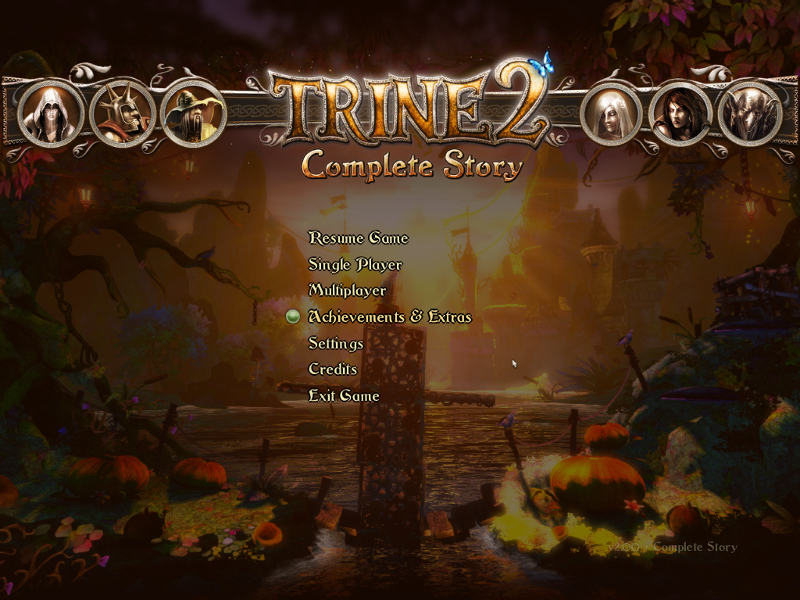
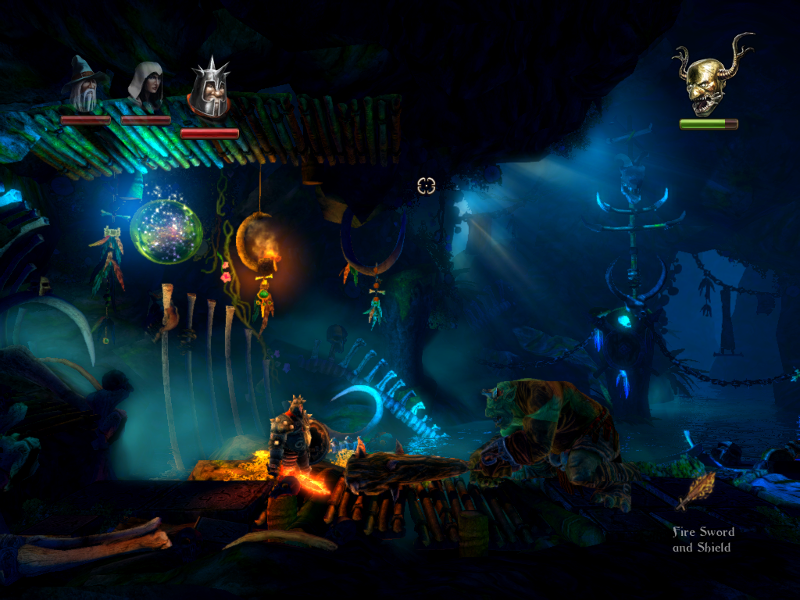
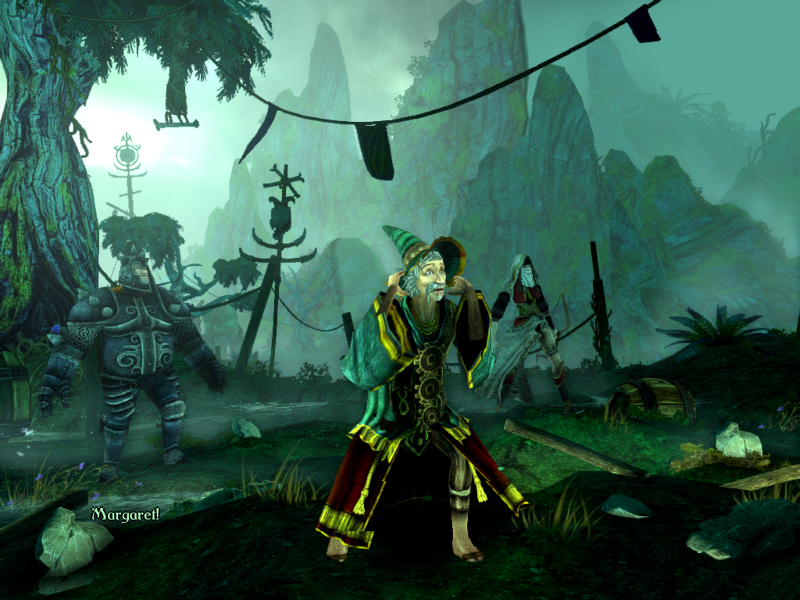
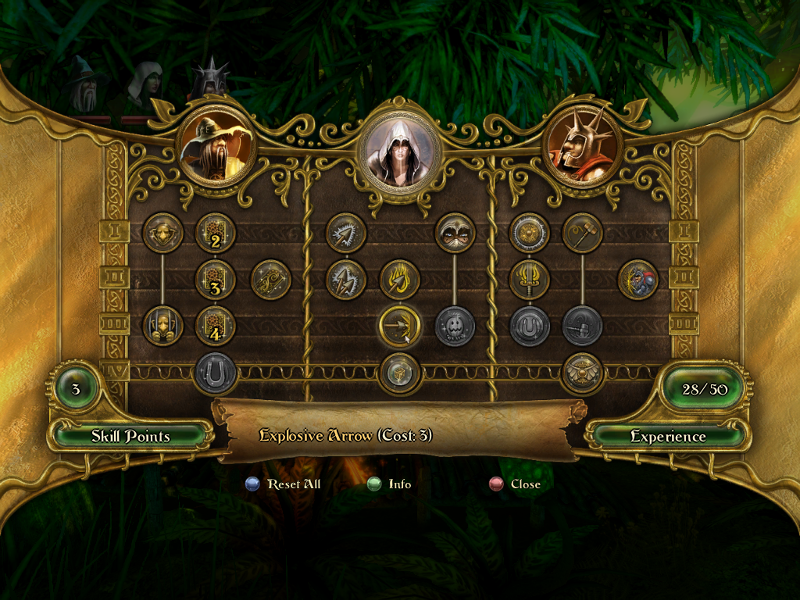
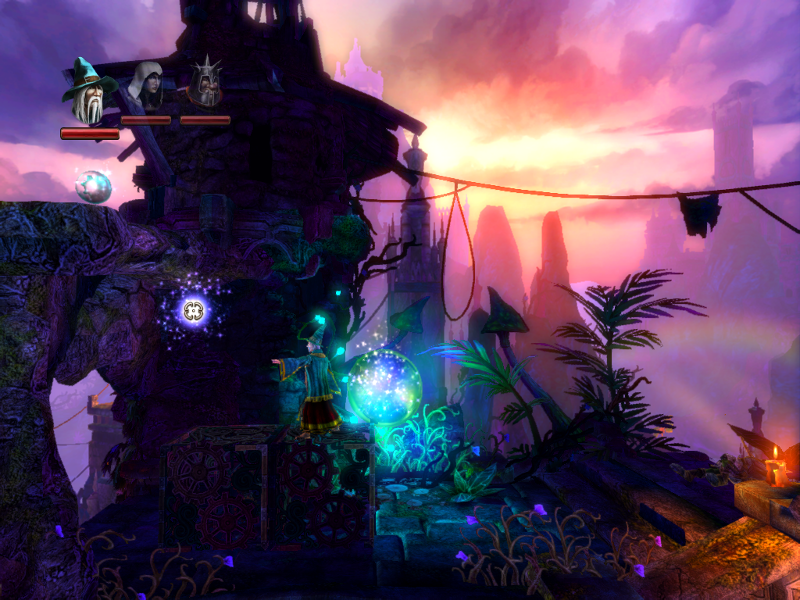
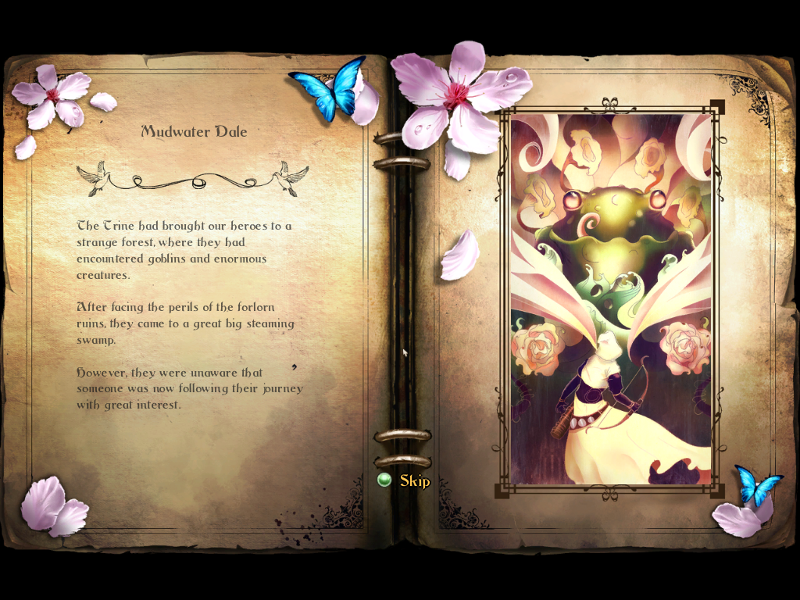
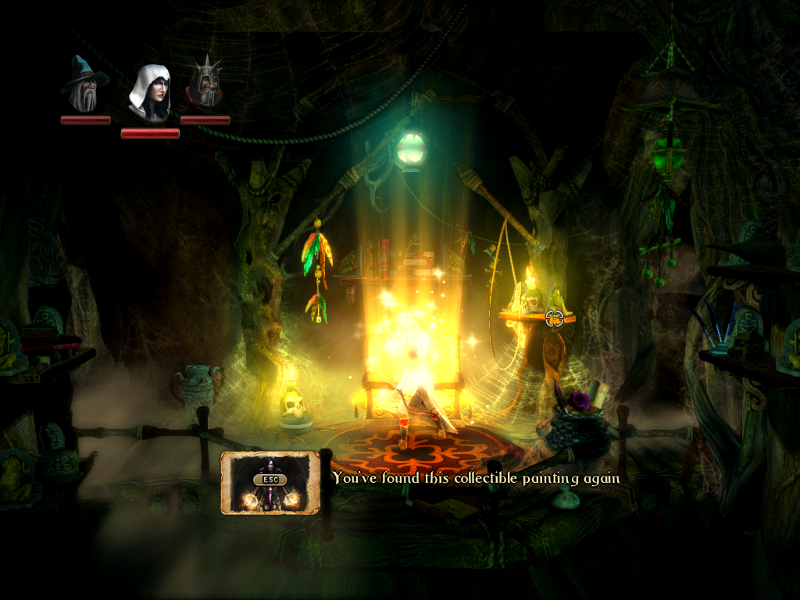
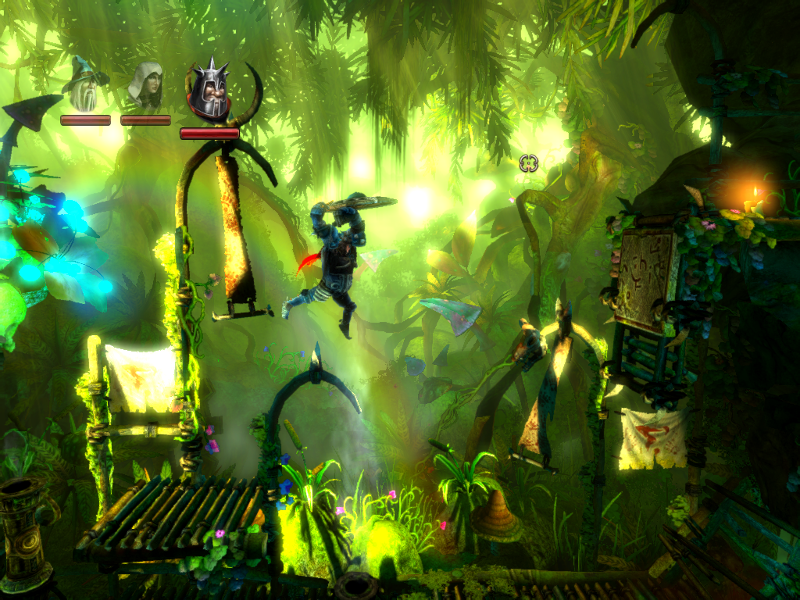
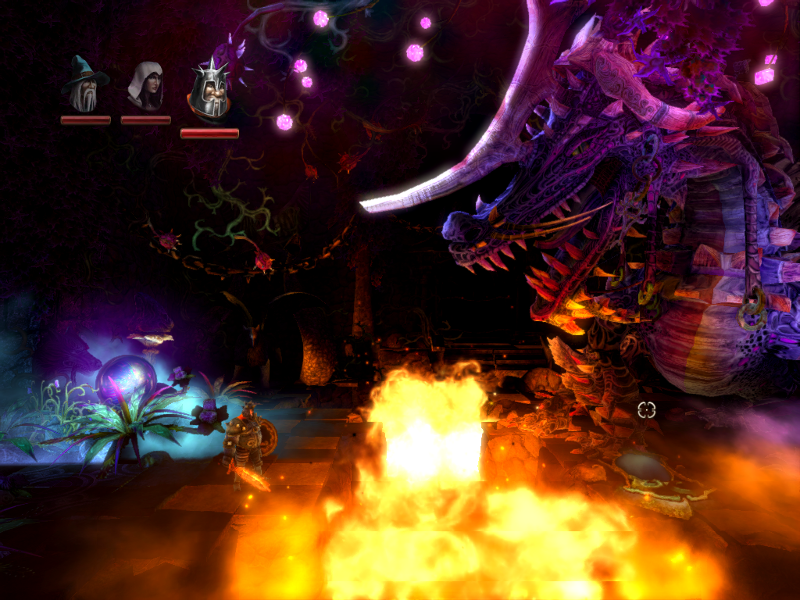
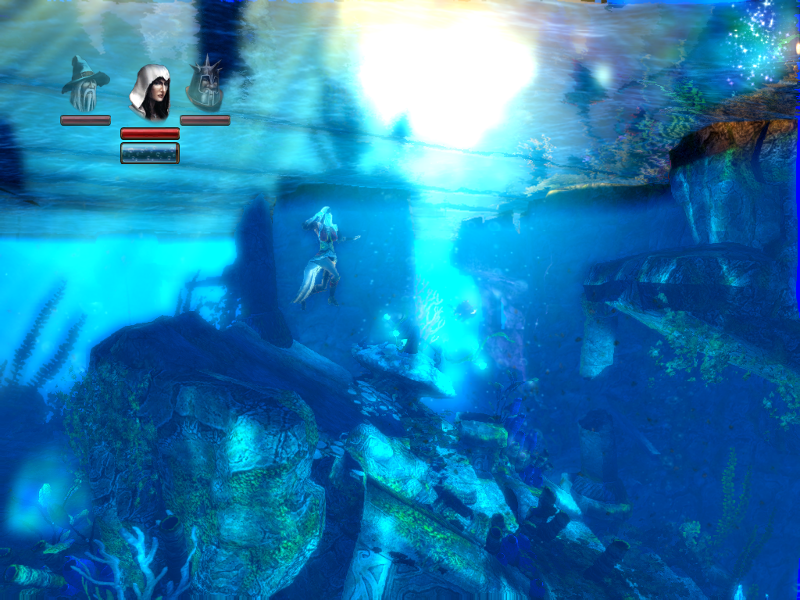
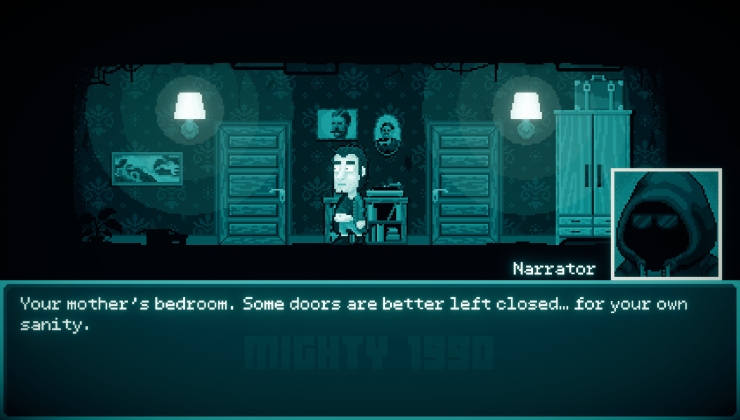
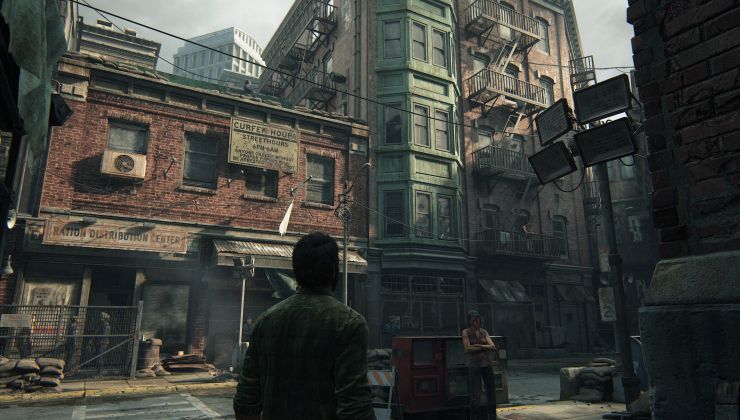
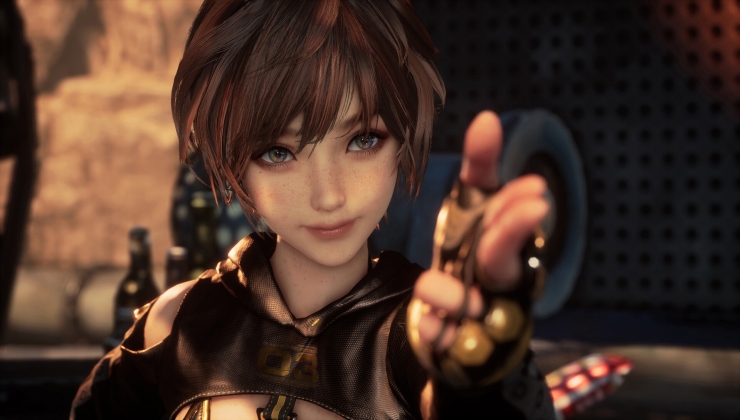
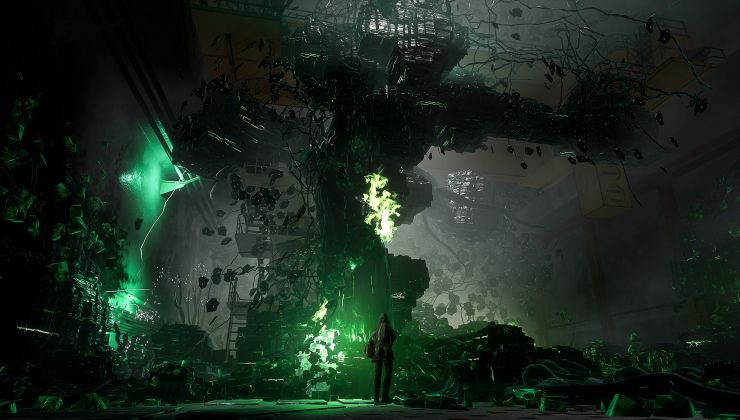




 How to set, change and reset your SteamOS / Steam Deck desktop sudo password
How to set, change and reset your SteamOS / Steam Deck desktop sudo password How to set up Decky Loader on Steam Deck / SteamOS for easy plugins
How to set up Decky Loader on Steam Deck / SteamOS for easy plugins
See more from me